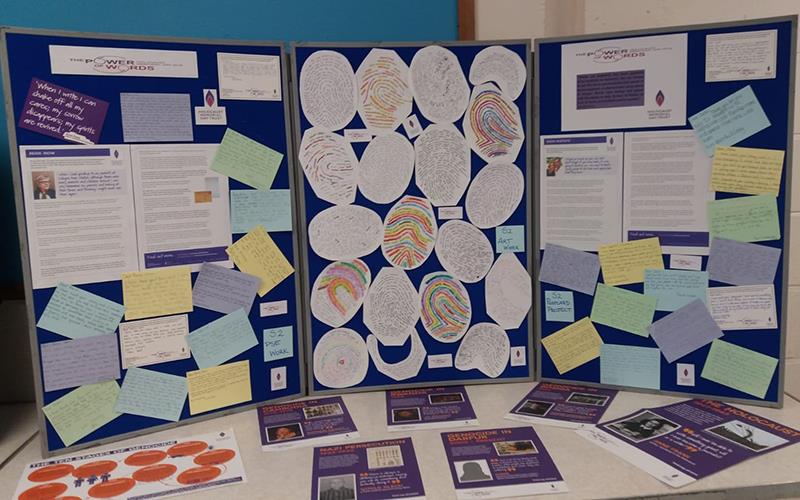Holocaust Memorial Day (HMD) takes place on January 27 every year. It is the day in 1945 when the Russian army reached the concentration camp Auschwitz in Nazi-occupied Poland.
It is the day to remember those murdered in the Holocaust, Nazi persecution and also in subsequent genocides in Cambodia, Rwanda, Bosnia and Darfur.
In January 2018 there were more than 4,500 school activities to mark the day, including assemblies, lesson plans, projects and events.
Marking HMD can have a big impact on students’ knowledge and understanding, empathy and attitudes towards people from different backgrounds, as well as increasing their desire to take part in positive social action.
Holocaust Memorial Day Trust has produced free resources for teachers in primary and secondary schools. They contain everything you need to get involved with HMD, even if you are new to teaching the subject. All the resources include differentiated options for SEN students and mixed ability groups. These include:
- Assemblies: scripts and presentations give teachers and students everything they need to lead an assembly for all pupils.
- Lesson plans: our lesson plans are suitable for use in different curriculum areas and cover a range of topics. Life stories of people affected by genocide help students connect to the history through personal experiences, and creative activities enable them to explore and discuss different themes.
- Tutor times: these quick sessions offer students an introduction to different genocides that have happened around the world, through engaging activities and discussion questions.
- Projects: our educational projects encourage students to take their involvement further, and recognise their own ability to make a difference in today’s society.
The Postcard Project
For HMD 2019, you can take part in the Postcard Project to explore the theme “Torn from home”. Students will learn and discuss the life stories of two survivors who were forced to flee their homes (one during the Holocaust and another in the Genocide in Cambodia), and write a message to them. As a class you will receive a reply postcard from these survivors. See the Holocaust Memorial Day Trust (HMDT) website to find age-appropriate lesson plans for primary or secondary.
Case studies
Schools around the country marked HMD 2018 in a range of creative and engaging ways. Here are just a few examples of their good work.
Coopers School, Bromley
Every year group attended an assembly, and every tutor group in the school took part in three lessons using lesson plans from the HMDT website. They explored issues of discrimination, analysed poetry written in response to the Holocaust and genocides, and took part in the Postcard Project.
Drama students created performances using the HMD drama lesson plan. HMD posters were displayed in three areas of the school, and an exhibition of artworks by Aviva Halter-Hurn, daughter of Holocaust survivor Roman Halter, was arranged in the school gallery space. Sixth-form students gave talks about the exhibition. The programme of activity culminated in a community event for 80 local people, featuring student performances and a talk by Anita Peleg, daughter of Holocaust survivor Naomi Blake.
Buckie High School, Scotland
A cross-curricular approach to marking HMD included lessons in history, RE, art, PSE, geography, music and modern languages. All students also took part in assemblies, and there was a school display (pictured below). Every tutor group discussed the theme for HMD 2018 – The power of words – and talked about how this relates to social media and our own responsibilities to use our words for good.

Bromsgrove School, Worcestershire
As an HMD Youth Champion, Alia led a presentation for year 9 and year 10 students about the different groups persecuted by the Nazis and why it is important to mark HMD. She also organised workshops for year 9 students to teach them about the subsequent genocides in Cambodia, Rwanda, Bosnia and Darfur.
HMDT Youth programmes
The HMDT Youth Champion programme empowers young people aged 14 to 18 to take the lead in marking HMD in schools, colleges and youth groups. During the programme, they will develop leadership and communication skills to work towards a better future by ensuring that discrimination, racism and hatred have no place in their communities.
As Youth Champions, students will:
- Learn more about the Holocaust, Nazi Persecution and subsequent genocides in Cambodia, Rwanda, Bosnia and Darfur.
- Engage with survivors’ experiences and feel inspired to end hatred and discrimination today.
- Gain leadership and communications skills to mark HMD.
- Be part of a network of young people all over the UK and make a real difference challenging people to learn from genocide for a better future.
The bigger picture
If you hold an HMD activity, whether that is putting up a poster display or teaching a lesson using one of our education resources, please add it to the online activities map on our website.
- Alex Murphy is education officer at the Holocaust Memorial Day Trust.
Further information
- To download the HMD materials for free, visit https://hmd.org.uk/education and for more on the Postcard Project, see https://hmd.org.uk/postcards
- You can encourage your students to find out more and sign up to become a Youth Champion at https://hmd.org.uk/youth
- For any other queries about HMD 2019, email education@hmd.org.uk
